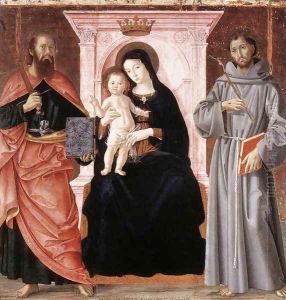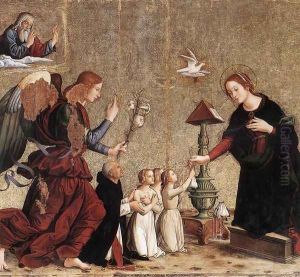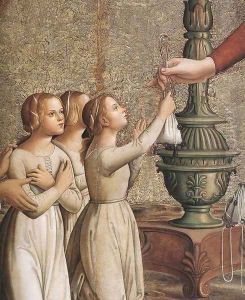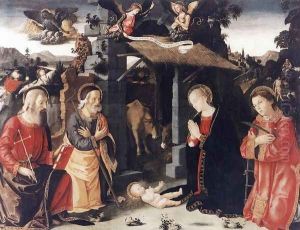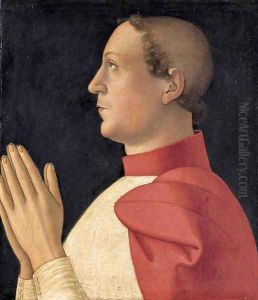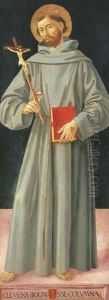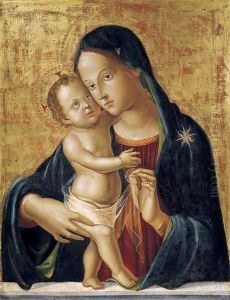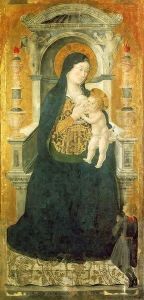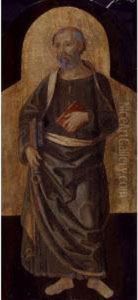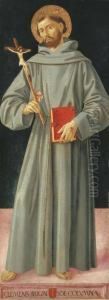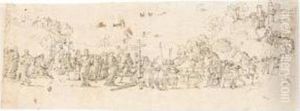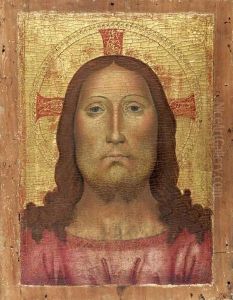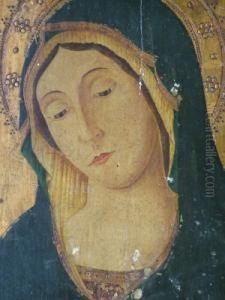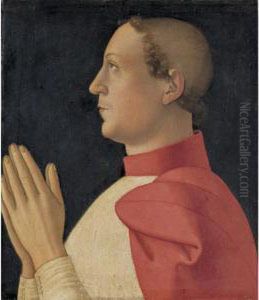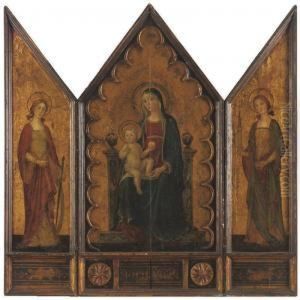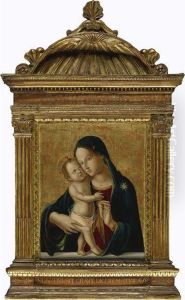Antoniazzo Romano Paintings
Antoniazzo Romano, born Antonio di Benedetto Aquilo degli Aquili around 1430, was a prominent Italian painter of the Early Renaissance period, primarily active in Rome. His work significantly contributed to the Roman school of painting, bridging the late medieval tradition with the emerging Renaissance art movement. Antoniazzo was especially noted for his devout religious paintings, altarpieces, and frescoes that adorned many churches and basilicas in Rome.
Antoniazzo's early life is somewhat obscured, but it is believed he was trained in the artistic milieu of Rome, absorbing influences from both local traditions and the innovative techniques introduced by artists from Florence and other regions. This blend of influences is evident in his works, which often combine the detailed narrative style of medieval art with the emerging emphasis on perspective and human emotion characteristic of the Renaissance.
By the 1460s, Antoniazzo had established himself as one of Rome's leading artists. His reputation was significantly bolstered by his association with the influential Melozzo da Forlì, from whom he may have learned the technique of foreshortening and the use of perspective to create the illusion of depth. One of his most famous works, the 'Madonna and Child Enthroned with Saints,' reflects this mastery and showcases his ability to create a harmonious and devout composition that still resonates with viewers today.
Antoniazzo was also a pioneer in the use of the 'a secco' fresco technique, which involved painting on dry plaster, allowing for greater detail and vibrancy in colors. This technique is particularly evident in his frescoes in the Basilica of San Marco in Rome, which are celebrated for their vividness and emotional depth.
In addition to his religious works, Antoniazzo Romano was involved in the decoration of many Roman palaces, collaborating with other artists of his time. His influence extended beyond his lifetime, contributing to the development of the Roman school of painting and setting the stage for the High Renaissance artists who would follow.
Antoniazzo Romano's contributions to art were not only limited to his paintings. He was also involved in the creation of mosaics and possibly engaged in the minting of coins for the Vatican, reflecting the diverse talents of this Renaissance artist. Despite the scarcity of documented details about his personal life, his extensive body of work provides a rich legacy, offering insight into the artistic and cultural milieu of Renaissance Rome.
Antoniazzo continued to work and influence the Roman art scene until his death around 1510. His legacy endures, with his works preserved in various churches and museums, serving as a testament to his skill and the vibrancy of the Roman Renaissance.
